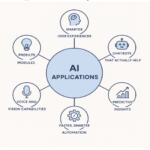In the rapidly evolving tech landscape, legacy systems often become bottlenecks for innovation. While these applications may have once served as the backbone of operations, aging infrastructure, outdated codebases, and security vulnerabilities can hinder scalability and performance. This is where legacy application modernization comes into play.
Among the top approaches, two methods often compete for attention: Refactoring and Rebuilding. Each has its own set of pros and cons, and choosing the right path is critical for business continuity, user experience, and long-term growth. In this guide, we break down both approaches and help you determine which modernization route is smarter for your unique case.
What Is Refactoring?
Refactoring is the process of restructuring the existing code of an application without changing its external behavior. Think of it as giving your legacy app a “code-level facelift”—you’re improving performance, maintainability, and security while keeping the app’s core functionality intact.
This approach is often used when:
- The application is still functional and provides value.
- You need to reduce technical debt.
- Time-to-market is critical.
- You want to make gradual improvements without disrupting users.
What Is Rebuilding?
Rebuilding, also known as re-engineering, involves discarding the old codebase and starting from scratch. You recreate the application using modern technologies, frameworks, and design principles. While more resource-intensive, it gives you the flexibility to build something scalable, secure, and fully aligned with modern needs. As noted by Radixweb’s modernization team, businesses that build modern apps from the ground up often benefit from stronger architectural agility and lower long-term maintenance overhead.
Partnering with an experienced app modernization company can streamline this process—offering strategy, technology expertise, and execution support for businesses aiming to transform their software from the ground up.
You might consider rebuilding when:
- The existing architecture is obsolete.
- The app cannot scale or integrate with modern systems.
- Security risks are unmanageable.
- The UI/UX is outdated and needs a complete redesign.
Key Differences: Refactor vs Rebuild
Refactoring
- Purpose: To enhance code readability, maintainability, and performance.
- Codebase: Reuses and improves the existing code.
- Time and Cost: Typically, faster and less costly in the short term.
- Risk Level: Lower, since the application’s core functionality remains unchanged.
- Technology Stack: Usually retains the existing tech stack with minor upgrades.
- Outcome: A cleaner, more maintainable application—but within the limitations of its original architecture.
- Best When: The app is still functional, and you need incremental improvements without disrupting users.
Rebuilding
- Purpose: To completely revamp the application to meet modern business and technical requirements.
- Codebase: Built from the ground up with a new codebase.
- Time and Cost: Higher upfront investment in both time and resources.
- Risk Level: Higher, due to complete redevelopment—but with the potential for greater reward.
- Technology Stack: Can adopt the latest frameworks, architectures (e.g., microservices), and tools.
- Outcome: A modern, scalable, and future-proof application.
- Best When: The current system is outdated, unscalable, or unable to support business growth or new features.
Refactoring: Benefits and Considerations
Pros of Refactoring
- Faster Time-to-Market: Ideal for incremental upgrades that don’t require major system overhauls.
- Lower Initial Cost: Since you’re working within the existing codebase, costs are lower compared to full redevelopment.
- Improved Maintainability: Cleaning up legacy code reduces complexity and improves long-term productivity.
- Minimal User Disruption: End-users see little to no change in features, allowing seamless operations.
Cons of Refactoring
- Limited Scalability: You’re still bound by the limitations of the original architecture.
- Technical Constraints: Refactoring may not address fundamental issues like outdated frameworks or poor system design.
- Hidden Bugs: Tweaking old code may surface new issues if proper testing isn’t conducted.
Ideal Use Cases for Refactoring
- The business logic is still valid and effective.
- You want to upgrade to a microservices-based architecture step-by-step.
- Teams need to address performance issues without affecting the core functionality.
- You’re preparing for a future rebuild but want short-term improvements now.
Rebuilding: Benefits and Considerations
Pros of Rebuilding
- Clean Slate: You can implement modern architectures such as microservices, serverless, or cloud-native.
- Improved Security: Eliminate legacy vulnerabilities with updated frameworks and compliance standards.
- Enhanced UX/UI: Build modern user interfaces that meet current design expectations.
- Scalability & Integration: Better suited for businesses looking to grow or integrate third-party tools and APIs.
Cons of Rebuilding
- High Cost and Time Investment: Starting from scratch is resource-intensive.
- Disruption Risks: Major changes could lead to downtime or a steeper learning curve for users and staff.
- Requires Detailed Planning: A rebuild needs solid documentation, stakeholder alignment, and change management.
Ideal Use Cases for Rebuilding
- The app is built on outdated technology (e.g., VB6, Flash, Classic ASP).
- Business workflows have changed significantly since the app was built.
- You want to introduce completely new features and modules.
- The current system is unmanageable or unsupported by vendors.
According to Radixweb, organizations that align modernization efforts with long-term product vision gain significantly more from rebuilding than short-term refactoring fixes.
Choosing the Smarter Path: Factors to Consider
When deciding between refactoring and rebuilding, there’s no one-size-fits-all answer. Here are a few critical questions to guide your decision:
- How outdated is the current technology stack?
If it’s unsupported or incompatible with new tools, rebuilding may be necessary.
- Is your application still aligned with business workflows?
If it is, refactoring might be sufficient. If not, rebuilding allows for process reengineering.
- What is your timeline and budget?
Refactoring usually offers faster, lower-cost gains. Rebuilding requires a longer runway but delivers long-term value.
- Are you scaling or transforming your business?
Significant growth or digital transformation often demands a rebuilt foundation.
Organizations often turn to legacy modernization solutions to navigate these decisions more effectively—gaining insights, structure, and frameworks that reduce risk while maximizing business impact.
Final Thoughts
Legacy modernization is not just a technical choice—it’s a strategic decision that impacts your ability to compete, innovate, and serve customers effectively.
Refactoring is ideal when you need a quick performance boost or want to modernize incrementally without disrupting operations. Rebuilding, on the other hand, is better suited for businesses that need to start fresh and prepare for the future with a stronger foundation. Radixweb reports that a phased approach — starting with core refactoring and moving to full rebuild — often delivers the lowest risk path for mission-critical legacy systems.
In many cases, the smartest path is not one or the other—but a thoughtful combination of both. Assess your goals, involve stakeholders, and choose the route that best supports your long-term business vision.
About the Autho:
This article was developed in collaboration with Radixweb, a globally trusted technology partner with over two decades of experience in modernizing enterprise applications. Drawing from their work across industries and modernization models, Radixweb’s insights helped shape the discussion around evaluating legacy systems, choosing between refactoring and rebuilding, and aligning modernization strategies with long-term business goals. Their team regularly advises enterprises on navigating technical debt, re-architecting legacy platforms, and implementing scalable, future-ready solutions


